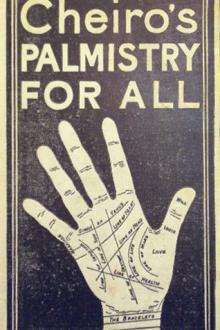The Diary - Samuel Pepys (red white and royal blue hardcover txt) 📗

- Author: Samuel Pepys
Book online «The Diary - Samuel Pepys (red white and royal blue hardcover txt) 📗». Author Samuel Pepys
George Gififord, A.M., appointed in 1661 rector of St. Dunstan’s in the East. Died 1686. —Newcourt’s Repertorium Ecclesiasticum. —B. ↩
See note 4423. ↩
The old palace at Greenwich had just been pulled down, and a new building commenced by Charles II, only one wing of which was completed, at the expense of £36,000, under the auspices of Webb, Inigo Jones’s kinsman and executor. In 1694 the unfinished edifice was granted by William and Mary to trustees for the use and service of a Naval Hospital; and it has been repeatedly enlarged and improved till it has arrived at its present splendour. —B. ↩
The anti-church party. ↩
The report could hardly have been believed, considering the bishop’s connection with Oliver Cromwell. —B. ↩
A comedy by Beaumont and Fletcher, performed at Court in 1642, and published in the folio edition of their plays, 1647. Genest does not mention the revival of the play before 1682. ↩
See November 29th, ante. ↩
Sir John Kempthorne, Commissioner of the Navy at Portsmouth in 1675, and at Chatham in 1679. On the commencement of the second Dutch war, being then a rear-admiral of the blue, he hoisted his flag on board the St. Andrew. For his conspicuous conduct at the battle of Southwold Bay he was made vice-admiral. He died in 1679. ↩
Sir Laurence Van Heemskirk was captain of the Nonsuch. In a letter from B. Johnson to Williamson, dated “Portsmouth Yard, March 14,” we read, “The new Nonsuch is at Spithead, having had some alterations made to advance her sailing. The captain and officers are in London about a difference between him and his lieutenant” (Calendar of State Papers, 1668–69, p. 233). ↩
John Holland, Paymaster to the Treasurer of the Navy, mentioned before. A copy of this work, which has never been printed, is amongst Sir Hans Sloane’s MSS., and another, in connection with papers relative to the Navy, formerly belonging to Sir George Duckett, both in the British Museum. In the Pepysian Collection, No. 113, are Two Discourses of Mr. Holland’s touching the Government of the Navy; one under the Earl of Northumberland in 1638, probably perused by Pepys, February 14th, ante, and April 18th, post; the other during the Rebellion, 1659, 2 vols., fol. —B. ↩
Lambeth. Stangate extends from the west end of Westminster Bridge to Lambeth Marsh. ↩
Hugh May. ↩
Sir Christopher. ↩
See May 18th, 1660. ↩
Thomas Holden to Williamson, dated “Falmouth, March 15”:
“The Morning Star has come in, and reports that she was met off Cadiz by an Algiers man-of-war of 30 guns well manned, who came on board and demanded a Moorish boy that they had; having found him they carried him to their own ship, and by beating upon the soles of his feet, and other torments, made him confess to much money on board the Star, which they came and took, amounting to £8,000 to £10,000”
Calendar of State Papers, 1668–69, p. 234↩
His servants. ↩
Although marriages during Lent have always been considered unseemly, it is a vulgar error to suppose that a licence is required to solemnize them at that season. See Johnson’s Clergyman’s Vade-Mecum, vol. i, p. 167. —B. ↩
Salisbury House, Strand, built by Sir Robert Cecil, the first Earl of Salisbury. Queen Elizabeth was present at the housewarming on December 6th, 1602. It was pulled down in 1695, and Cecil Street built on the site. Ivy Bridge Lane, to the west of the old mansion, still exists, by the side of the new “Hotel Cecil” which has been built on the site of Cecil and Salisbury Streets. ↩
“Petition of Joseph Brown, calker to the Navy Commissioners (March 25, 1669), for some recompense for quenching the fire from burning the Defiance’s head, on which service he burnt a Sunday coat and hat.” Calendar of State Papers, 1668–69, p. 249. ↩
See the day before. ↩
Captain John Tinker, master attendant at Portsmouth. ↩
See April 1st, 1667. ↩
The Friary, in Aylesford parish, since the property of the Earls of Aylesford, whose ancestor, Heneage Finch, married the eldest daughter and co-heir of Sir John Bankes. —B. ↩
Kits-Cotty House, a cromlech in Aylesford parish, Kent, on a hillside adjacent to the river Medway, three and a half miles N. by W. of Maidstone. It consists of three upright stones and an overlying one, and forms a small chamber open in front. It is supposed to have been the centre of a group of monuments indicating the burial-place of the Belgian settlers in this part of Britain. Other stones of a similar character exist in the neighbourhood. ↩
John Manley, M.P. for Bridport; he married Margaret, daughter of the unfortunate Isaak Dorislaus. —B. ↩
The Duke of York’s order to Sir William Penn, authorizing him to call a court-martial to inquire concerning the loss of the Defiance, was dated December 29th, 1668. The list of those summoned to form the court-martial are as follows: Sir George Ascue, Sir Jeremy Smith, Sir Robert Holmes, Sir Joseph Jordan, Sir John Harman, Thomas Middleton, Esq., Samuel Pepys, Esq., Rear-Admiral Kempthorne, Capt. John Cox, Sir John Chicheley, Capt. John Hubbard, Capt. Willough. Hannam, Capt. William Poole, Capt. John Narbrough, Capt. William Coleman, Capt. Edw.





Comments (0)